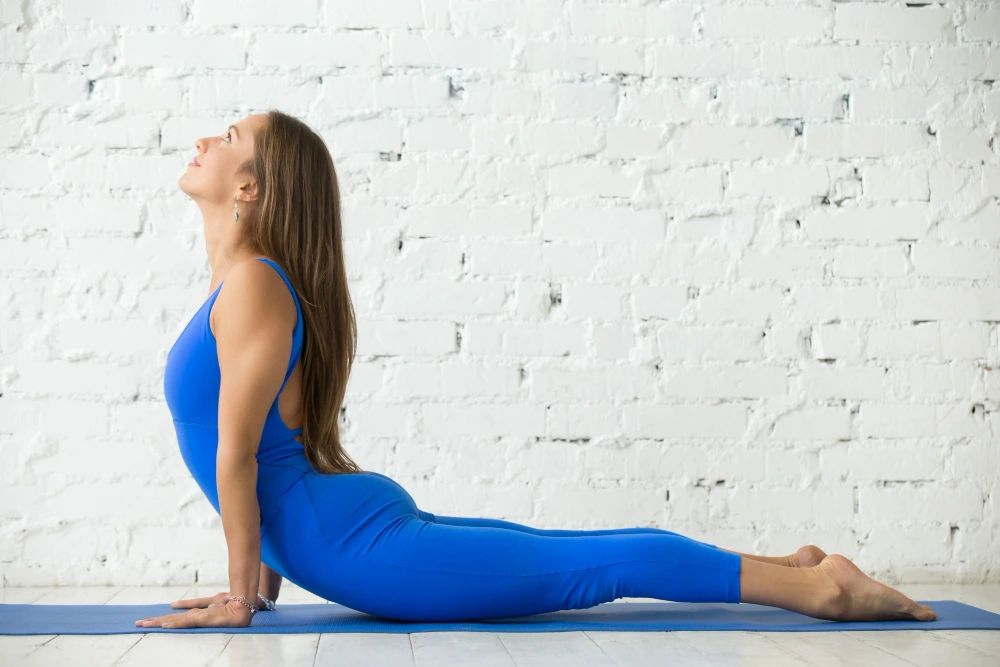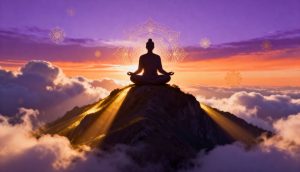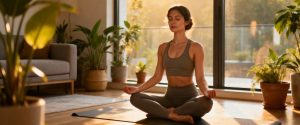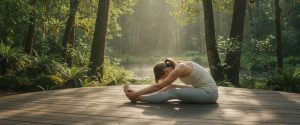Bhujangasana, known as the cobra pose, is a back-bending asana that strengthens the back, opens the chest, and activates vital energy. Its name comes from Sanskrit, where Bhujanga means snake and Asana means pose, reflecting the image of a cobra rising with majesty and control.
This posture is widely used in Hatha and Vinyasa Yoga sequences, especially as part of the Sun Salutations, as it helps to awaken the body, improve spinal flexibility and stimulate deep breathing.
Furthermore, its regular practice strengthens the muscles of the lower back, improves posture, and relieves stiffness in the lumbar area, being an excellent tool for those who spend many hours sitting.

At an energetic level, Bhujangasana is associated with the opening of the heart and the activation of the Anahata chakra, fostering the sensation of trust, vitality, and emotional expansion. It also stimulates the Manipura chakra (solar plexus), helping to improve digestion and strengthen internal energy.
It’s a yoga pose that invites self-exploration and growth, as it requires a balance between effort and gentleness. By lifting the torso with the support of the arms and the strength of the core, the body learns to find stability without unnecessary tension, allowing the breath to flow freely.
If you're interested in Yoga Nidra, you can check out our Yoga Nidra course.
If you’re looking for an asana that combines strength, flexibility, and openness, Bhujangasana is a powerful choice within your yoga practice.

Bhujangasana Variations
Bhujangasana is a versatile posture that can be adapted to the flexibility, strength, and experience level of each practitioner. Below, I present some of its most common variations:
- Low Bhujangasana (Baby Cobra or Gentle Cobra): In this version, the elbows remain slightly bent and close to the body, allowing the chest to lift without excessive tension in the lumbar area. It is ideal for beginners or those who have discomfort in the lower back.

- Sphinx Pose: Softer adaptation in which the forearms remain supported on the ground with the elbows aligned under the shoulders. It is ideal for working the opening of the chest without straining the lower back, especially in restorative practices.
- Dynamic Bhujangasana: A variation in which a wave-like movement is performed with the spine, starting from the chest and progressively rising to stretch the arms. It helps improve spinal mobility and awaken the spine in Vinyasa sequences.
- Bhujangasana with Blocks: For greater stability and alignment, blocks can be placed under the hands to reduce compression in the lumbar area and facilitate a more controlled elevation of the torso.
Each of these variations allows you to adjust the posture according to the needs of the body, ensuring safe and effective practice. If practiced with attention to breathing and alignment, Bhujangasana can become a powerful tool for strengthening and flexing the back consciously.
Benefits of Bhujangasana
It is no coincidence that the Cobra Pose is a key piece in practices such as Hatha Yoga and Ashtanga. Its benefits encompass both physical well-being and mental balance, making it an essential asana for those seeking to strengthen the body and calm the mind.
At a physical level, Bhujangasana is a fundamental posture for strengthening the spine. By raising the chest and activating the back, the muscles surrounding the spine are strengthened, which improves posture and helps prevent lower back discomfort.
In addition, the slight compression that is generated in the abdomen acts as an internal massage for the digestive organs, favoring digestion and stimulating kidney function. Its ability to open the chest and expand the lungs also contributes to better blood circulation, carrying more oxygen to the heart and lungs.
On the mental and emotional level, Bhujangasana is a posture that helps to release stress and tension accumulated in the body. By adopting this open position, energy flows more freely, generating a feeling of vitality and well-being.
It also has a positive effect on the nervous system, since by keeping the body upright and expanding, brain activity is stimulated, which can improve concentration and mental clarity.
Another powerful aspect of this posture is its impact on self-esteem and personal confidence. The combination of strength and flexibility that Bhujangasana requires helps us develop a greater sense of control and self-efficacy.
By holding the posture with stability, the body and mind learn to find balance between effort and relaxation, which translates into a feeling of security and empowerment.
The presence of Bhujangasana goes beyond the practice of yoga; it is also widely used in physiotherapy for its ability to relieve back pain and improve spinal mobility. In addition, within practices such as mindfulness, this asana becomes a powerful tool for connecting with the breath and calming the mind.
Thus, the Cobra pose is positioned as one of the most complete and beneficial asanas, not only to improve physical health, but also to achieve a state of emotional stability and mental peace.






